A Video About The Public Adjuster & Fraud
Every Profession has the Occasional Crook
When a public insurance adjuster exceeds his or her authority and attempts to defraud an insurer on behalf of the adjuster’s client, the standard “Concealment or Fraud” provision precludes the insureds from obtaining any recovery under their policies as the claims submitted by Berson, their public insurance adjuster, in his capacity as their agent, were fraudulent. [Astoria Quality Drugs, Inc. v. United Pacific Ins. Co. Of NY, 163 A.D.2d 82, 557 N.Y.S.2d 339).] “Chubb, therefore, is entitled to full recovery of the claims paid.” [Chubb & Son v. Consoli, 283 A.D.2d 297, 726 N.Y.S.2d 398, 2001 N.Y. Slip Op. 04550 (2001).]
The Texas legislature has statutorily made a contract that is void for illegality under the common law enforceable or voidable at the option of the least culpable party—the insured—when a person contracts with the insured to perform services as a public insurance adjuster but does not have a public insurance adjuster's license. [Lon Smith & Assocs., Inc. v. Key, 527 S.W.3d 604 (Tex. App. 2017
In U.S. v. Saada, 212 F.3d 210 (3rd Cir., 1999) the government's evidence at trial showed that:
[i]n 1990, appellants contacted Ezra Rishty, Isaac's cousin, for help in an insurance fraud scheme. Rishty was a public insurance adjuster in New York City who had conspired with various clients in over 200 fraudulent insurance schemes in the past.
Rishty agreed to assist Isaac in filing a fraudulent insurance claim, and enlisted the help of Morris Beyda, a former employee who by then owned his own business. Rishty also enlisted the help of Sal Marchello, a general adjuster for the Chubb Insurance Group ("Chubb"), which was Scrimshaw's insurer. Marchello assured Rishty that Chubb would assign him to handle the future Scrimshaw claim.
In U.S. v. Lemm, 680 F.2d 1193 (8th Cir. 1982) a scheme to defraud insurers was defeated with the testimony of a putative PA. He explained to the trial court that the arson and insurance fraud activities underlying the convictions of various defendants resulted from fire to fire, but a general scenario was summarized by Eugene P. Gamst, the government's chief witness, who was a public insurance adjuster licensed in Minnesota. The government's case showed that at some point in the early 1970's Gamst began mixing his legitimate adjustment activities with arson, eventually becoming the center of an arson ring alleged to have existed from April 1, 1975 to September 1, 1978.
The basic mode of operation was that Gamst, or occasionally another coconspirator, would recruit an individual to start an arson fire for insurance proceeds. Gamst would instruct the individual how to start the fire, how to act, and what to tell the authorities. After the fire, Gamst would pose as a legitimate public adjuster of an accidental fire. Occasionally, Gamst would also act as a private contractor and repair the fire damage in order to obtain a larger portion of the insurance proceeds. The roles of the other conspirators included providing seed money for the purchases of property, locating property for burning, providing property to be burned, preparing and torching the property, and recruiting others to the scheme resulted in convictions.
In Everett Cash Mutual vs. Bonnie Sue Gibble, the Court of Common Pleas of Lycoming County, Pennsylvania, NO. 01-01,640 was faced with a motion to exclude expert Testimony of Patrick Cassidy, Defendants’ proposed expert witness.
When Ms. Gibble’s furnace emitted soot into her home and the claim made with her homeowner’s insurance company, was not handled to Ms. Gibble’s satisfaction. Ms. Gibble sought the assistance of Mr. Cassidy, a public adjuster, and signed a “Public Adjustor Contract”, retaining Cassidy Public Adjustment “to advise and assist in the adjustment of the insurance claim”, agreeing to pay a contingent fee comprising a certain percentage “of the amount paid by the insurance companies in settlement of [the] loss and necessary expenses.”
After making several payments, including one which it offered as payment in full satisfaction of the claim, which payment Defendants refused to accept, Plaintiff filed the instant action, seeking a declaratory judgment that it had fulfilled all of its obligations under the insurance contract. Defendants counter-claimed for breach of contract, negligence, intentional infliction of emotional distress, unfair trade practices act violations and bad faith, and also joined the adjusters brought in by the insurance company as additional defendants. In support of their claims, Defendants plan to introduce the testimony of Mr. Cassidy as an expert witness, and in that regard have provided Plaintiff with a copy of his report, in which he opines, inter alia, that Plaintiff and Additional Defendants “did not follow proper claims practice.”
Gibble, in response, argue that Mr. Cassidy is acting as an expert in his role as a consultant, at the rate of $75 per hour, and only his work as a public adjuster is subject to the contingent fee agreement.
The long established rule of law that a special contract to pay more than the regular witness fees in ordinary cases is void for want of consideration and as being against public policy. Section 552 of the Restatement of Contracts, which provides, in subsection (2): “[a] bargain to pay an expert witness for testifying to his opinion a larger sum than the legal fees provided for other witnesses is illegal only if the agreed compensation is contingent on the outcome of the controversy.”
-
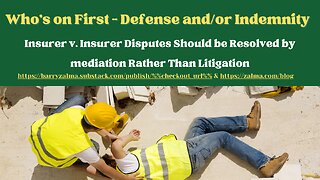 10:17
10:17
Barry Zalma, Inc. on Insurance Law
3 months agoWho's on First - Defense and/or Indemnity
88 -
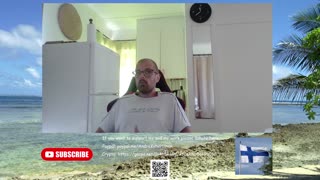 16:03
16:03
KyroTV
2 years ago $0.17 earnedVideo about LCHF
5752 -
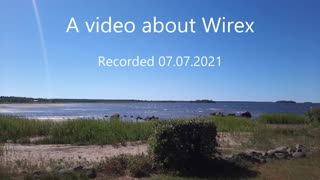 9:27
9:27
KyroTV
2 years agoA video about Wirex
34 -
 13:02
13:02
KyroTV
2 years ago $0.02 earnedA video about XRP (Ripple)
125 -
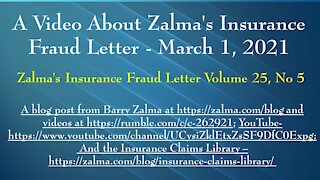 13:04
13:04
Barry Zalma, Inc. on Insurance Law
3 years agoA Video About Zalma's Insurance Fraud Letter - March 1, 2021
138 -
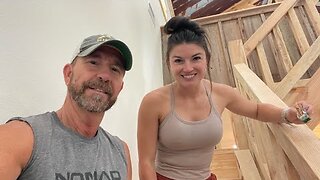 7:07
7:07
Hannah Barron
1 day agoDilemma in the New Kitchen!
60.6K58 -
 8:24
8:24
SaturdayMorningInspection
1 day ago $0.01 earnedTexans Just Got A FREE AGENT STEAL
56.2K7 -
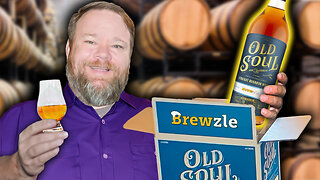 21:17
21:17
Brewzle
1 day agoBottling Our Barrel Picks at Cathead Distillery!
58K10 -
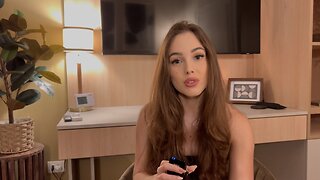 9:43
9:43
Blue Siesta ASMR
1 day ago $0.03 earnedASMR Hotel Check-In Roleplay | Soft Spoken
52.7K43 -
 12:33
12:33
Precision Rifle Network
23 hours agoWind Calling - Holdover vs. Dialing - Long Range Shooting
42.1K17